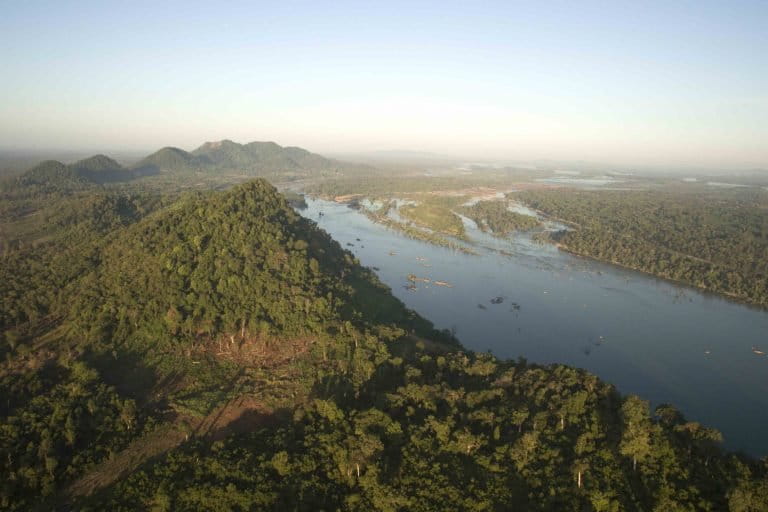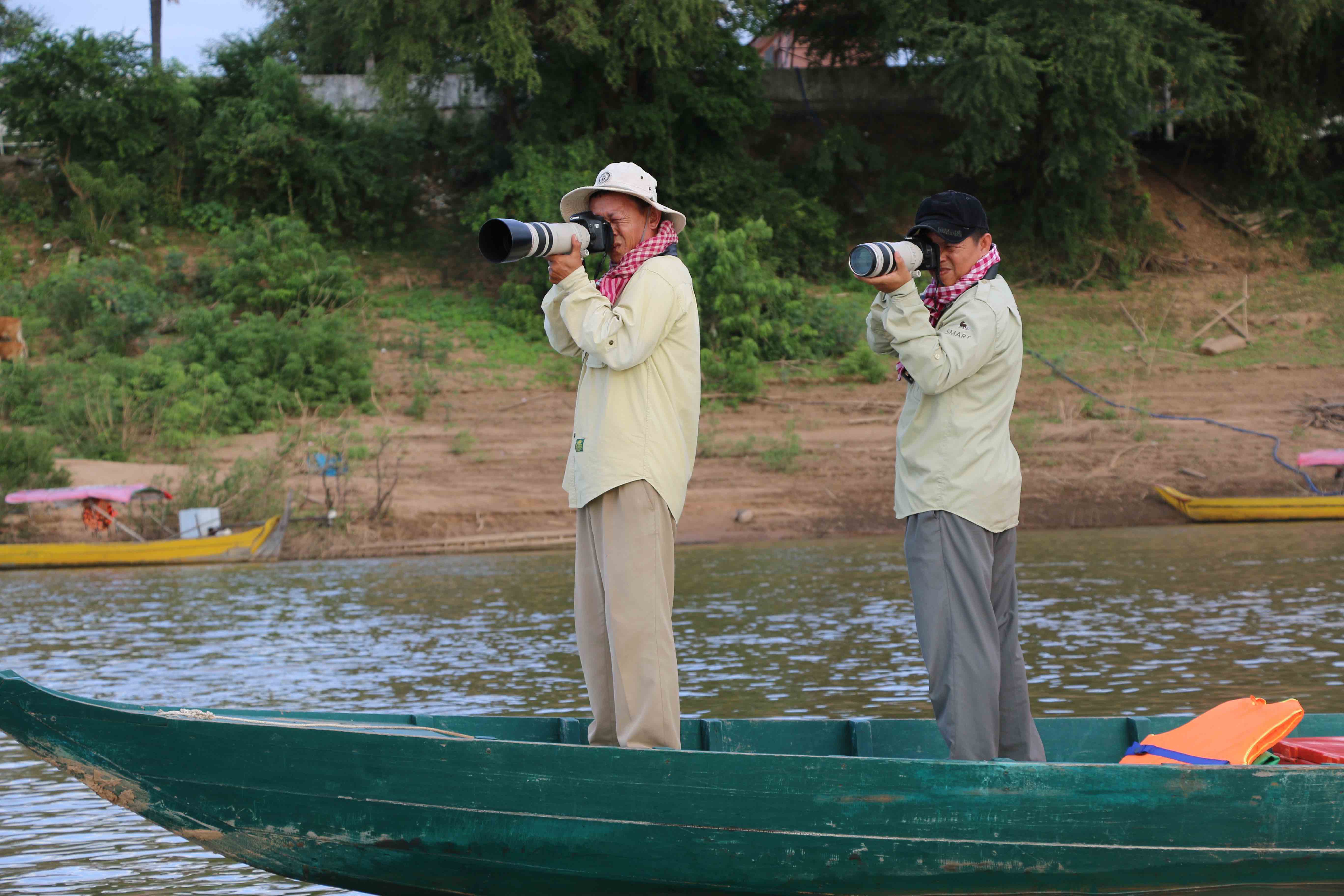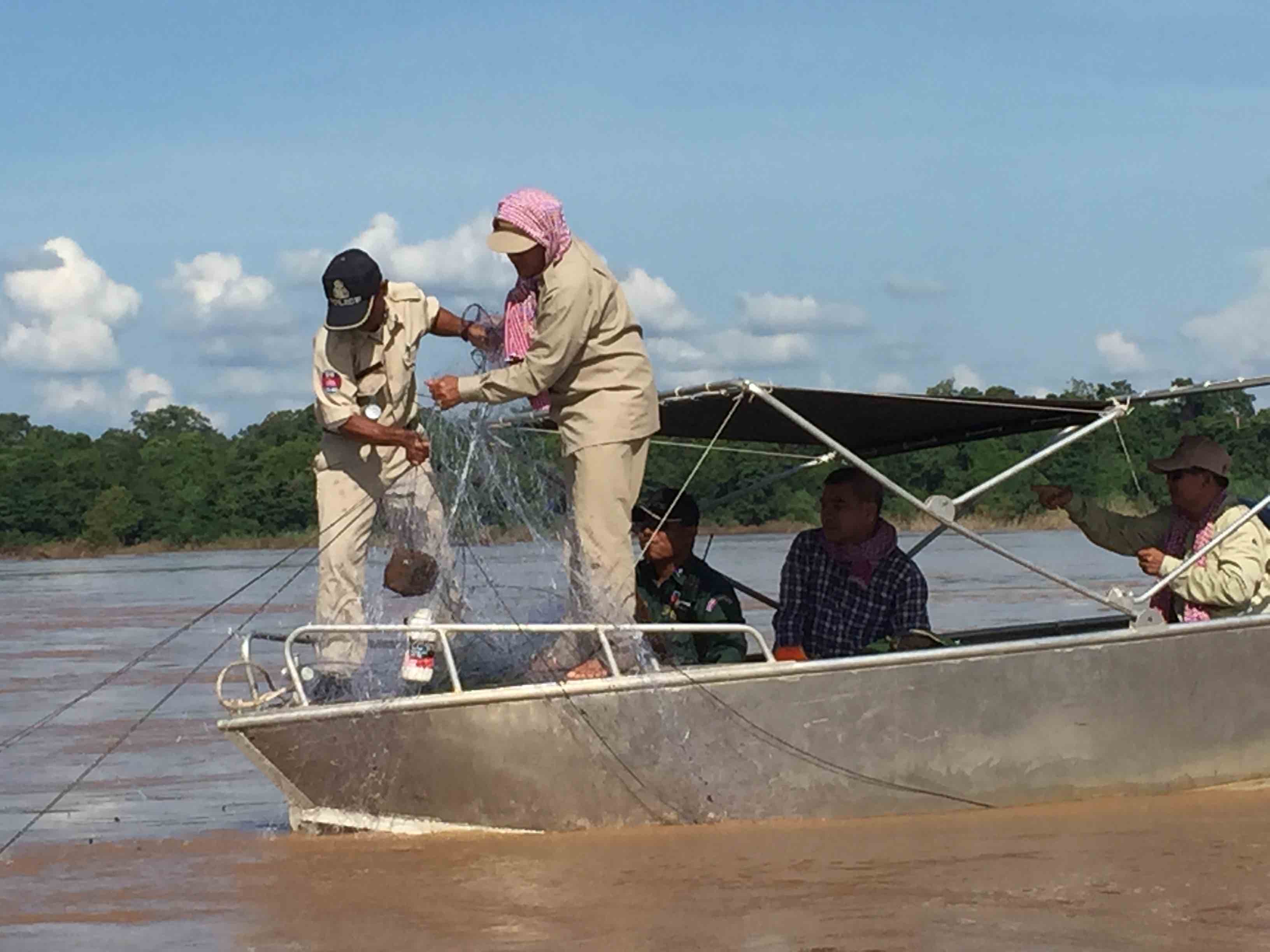- Numbers of the endangered Irrawaddy dolphin in the Mekong River have risen from 80 in 2015 to 92 in 2017, according to WWF-Cambodia.
- The WWF team has found other signs of improvements in the Mekong dolphin population, including more dolphins surviving into adulthood, increase in the number of dolphin calves, and a drop in dolphin deaths.
- These improvements are largely due to more effective patrolling by river guards, and increasing awareness about the dolphins among local communities, WWF said.
Irrawaddy dolphins in the Mekong River could be making a comeback.
After more than two decades of steady decline, numbers of the endangered Irrawaddy dolphin (Orcaella brevirostris) in the Mekong River have risen from 80 in 2015 to 92 in 2017, according to a joint announcement by the Cambodian government and WWF-Cambodia.
This slight population increase brings hope for the species, Teak Seng, country director of WWF-Cambodia, told Mongabay.
“And because the dolphin population is a key indicator of the health of the river, it means hope for the river itself and the millions of people who rely on it,” Seng said. “Moreover, it means that we have been taking the right approach to protect this natural living treasure of Cambodia.”

In the Mekong River, the Irrawaddy dolphins are known to range within a 190-kilometer (118-mile) stretch from Kratie in Cambodia to the slightly upstream Khone Falls complex in Laos. In 1997, researchers estimated that dolphin numbers within this stretch was no more than 200 individuals. This figure fell to 80 dolphins in a survey carried out in 2015. Over the past two years, however, dolphin numbers seem to be on the rise.
In the most recent survey conducted in 2017, WWF researchers looked for dolphins in boats, moving slowly in a zig-zag pattern, from bank to bank to cover most of the river’s surface area, Seng said. Whenever the researchers spotted dolphins, they stopped the boat, then spent about 30 to 120 minutes observing and photographing the animals. The team then analyzed these field observations and photographs, and estimated that there are about 92 dolphins in the river (with the estimate ranging between 80 and 106 dolphins).


The WWF team found other signs of improvements in the Mekong dolphin population. More dolphins seem to be surviving into adulthood, for instance, and there has been an overall increase in the number of dolphin calves and a drop in dolphin deaths.
These improvements are largely due to more effective patrolling by river guards, Seng said. The river guards scour the Mekong River for signs of illegal fishing activities, including dynamite fishing in protected zones or the use of illegal gill nets. The guards also identify and report people who enter prohibited zones illegally.
In the past few years, there has been an increase in the training of river guards, who have in turn intensified their patrolling of the Mekong River, Seng said.

“Besides effective patrolling, there has been a lot of effort put into awareness raising among the community people living around the protected zones,” Seng added. “They in turn have helped us protect the dolphins by reporting illegal fishing activities and supporting ecotourism development. In addition, close collaboration with local and provincial authorities have been significantly improved.”
The tour boat operators are yet another “secret ingredient of this success story,” Seng said. These tour operators, he said, help law enforcement by reporting illegal fishing activities such as the presence of gillnets, or dynamite, poison or electro-shock fishing.
Seng acknowledged that despite the encouraging increase in numbers of dolphins, the overall population of this species in the Mekong River is still small. Dolphins face serious entanglement risk in gillnets, for example. Hydropower dams on the main stem of the Mekong River, both under construction and proposed, are also big threats to the dolphins. “Thus, more efforts and strict law enforcement must be continued,” Seng said.
